The Home Potassium Monitoring Devices market is expected to grow from USD 63.07 million in 2022 to USD 210.90 million by 2032, at a CAGR of 12.83% during the forecast period 2023-2032.
Home potassium monitoring devices are portable electronic devices designed for individuals to measure and monitor their potassium levels in the comfort of their own homes. Potassium is an essential electrolyte vital in maintaining proper bodily functions, including heart and muscle function, nerve signalling, and fluid balance. Home potassium monitoring devices typically include a handheld device, wearable sensor, and associated software or smartphone applications. These devices utilize various technologies, such as ion-selective electrodes or biosensors, to detect and quantify potassium levels in a person's blood, urine, or saliva samples.
The growing geriatric population and rising incidence of chronic diseases such as hypertension and kidney disorders drive the market's growth. These conditions require regular monitoring of potassium levels, creating a demand for convenient and accessible monitoring solutions. Despite increasing awareness, individuals may still need more knowledge and understanding about the importance of monitoring potassium levels. Limited awareness and education about the benefits and usage of home monitoring devices can hinder the market's growth. However, technological advances have led to the development of portable and user-friendly home potassium monitoring devices, which are anticipated to create new opportunities over the forecast period. These devices provide accurate and quick results using blood or urine samples, enhancing their convenience and usability.
This study comprehensively analyses the type, application, and region. The type segment includes desktop, portable and others. The desktop segment held the highest market share in 2022. Desktop devices generally offer higher accuracy and precision when measuring potassium levels than portable or handheld devices. The larger size and advanced technology of desktop devices allow for more sophisticated measurement techniques, resulting in more accurate results. The application segment is divided into hospital, clinic and others. The hospital segment registered the largest market share in 2022. Hospitals have a team of healthcare professionals, including doctors, nurses, and specialists, who monitor and manage patients' health. Home potassium monitoring devices used in hospitals are typically designed to provide detailed data and insights that healthcare professionals can interpret and analyse. The presence of skilled medical personnel ensures proper interpretation of results and timely intervention if required.
The market has been divided into North America, Europe, Asia-Pacific, Middle East & Africa, and South America. The North American region held the highest market revenue in 2022. North America boasts a well-developed healthcare infrastructure with advanced medical facilities, research institutions, and a strong network of healthcare providers. This infrastructure supports the adoption and utilization of home potassium monitoring devices, as there is a robust framework for implementing and integrating these devices into the healthcare system.
Some of the notable players in the market are Abbott Laboratories, Trinity Biotech, Cardinal Health, Cepheid, bioMerieux, Novartis, Bio-Rad Laboratories, F. Hoffmann La Roche, Danaher, Siemens Healthineers, and Trividia Health among others.
Report Description:
1. Introduction
1.1. Objectives of the Study
1.2. Market Definition
1.3. Research Scope
1.4. Currency
1.5. Key Target Audience
2. Research Methodology and Assumptions
3. Executive Summary
4. Premium Insights
4.1. Porter’s Five Forces Analysis
4.2. Value Chain Analysis
4.3. Top Investment Pockets
4.3.1. Market Attractiveness Analysis By Type
4.3.2. Market Attractiveness Analysis By Application
4.3.3. Market Attractiveness Analysis By Region
4.4. Industry Trends
5. Market Dynamics
5.1. Market Evaluation
5.2. Drivers
5.2.1. Increasing prevalence of chronic diseases
5.3. Restraints
5.3.1. Limited awareness and education
5.4. Opportunities
5.4.1. Technological advancements
5.5. Challenges
5.5.1. Regulatory and quality control challenges
6. Global Home Potassium Monitoring Devices Market Analysis and Forecast, By Type
6.1. Segment Overview
6.2. Desktop
6.3. Portable
6.4. Others
7. Global Home Potassium Monitoring Devices Market Analysis and Forecast, By Application
7.1. Segment Overview
7.2. Hospital
7.3. Clinic
7.4. Others
8. Global Home Potassium Monitoring Devices Market Analysis and Forecast, By Regional Analysis
8.1. Segment Overview
8.2. North America
8.2.1. U.S.
8.2.2. Canada
8.2.3. Mexico
8.3. Europe
8.3.1. Germany
8.3.2. France
8.3.3. U.K.
8.3.4. Italy
8.3.5. Spain
8.4. Asia-Pacific
8.4.1. Japan
8.4.2. China
8.4.3. India
8.5. South America
8.5.1. Brazil
8.6. Middle East and Africa
8.6.1. UAE
8.6.2. South Africa
9. Global Home Potassium Monitoring Devices Market-Competitive Landscape
9.1. Overview
9.2. Market Share of Key Players in Global Home Potassium Monitoring Devices Market
9.2.1. Global Company Market Share
9.2.2. North America Company Market Share
9.2.3. Europe Company Market Share
9.2.4. APAC Company Market Share
9.3. Competitive Situations and Trends
9.3.1. Product Launches and Developments
9.3.2. Partnerships, Collaborations, and Agreements
9.3.3. Mergers & Acquisitions
9.3.4. Expansions
10. Company Profiles
10.1. Abbott Laboratories
10.1.1. Business Overview
10.1.2. Company Snapshot
10.1.3. Company Market Share Analysis
10.1.4. Company Product Portfolio
10.1.5. Recent Developments
10.1.6. SWOT Analysis
10.2. Trinity Biotech
10.2.1. Business Overview
10.2.2. Company Snapshot
10.2.3. Company Market Share Analysis
10.2.4. Company Product Portfolio
10.2.5. Recent Developments
10.2.6. SWOT Analysis
10.3. Cardinal Health
10.3.1. Business Overview
10.3.2. Company Snapshot
10.3.3. Company Market Share Analysis
10.3.4. Company Product Portfolio
10.3.5. Recent Developments
10.3.6. SWOT Analysis
10.4. Cepheid
10.4.1. Business Overview
10.4.2. Company Snapshot
10.4.3. Company Market Share Analysis
10.4.4. Company Product Portfolio
10.4.5. Recent Developments
10.4.6. SWOT Analysis
10.5. bioMerieux
10.5.1. Business Overview
10.5.2. Company Snapshot
10.5.3. Company Market Share Analysis
10.5.4. Company Product Portfolio
10.5.5. Recent Developments
10.5.6. SWOT Analysis
10.6. Novartis
10.6.1. Business Overview
10.6.2. Company Snapshot
10.6.3. Company Market Share Analysis
10.6.4. Company Product Portfolio
10.6.5. Recent Developments
10.6.6. SWOT Analysis
10.7. Bio-Rad Laboratories
10.7.1. Business Overview
10.7.2. Company Snapshot
10.7.3. Company Market Share Analysis
10.7.4. Company Product Portfolio
10.7.5. Recent Developments
10.7.6. SWOT Analysis
10.8. F. Hoffmann La Roche
10.8.1. Business Overview
10.8.2. Company Snapshot
10.8.3. Company Market Share Analysis
10.8.4. Company Product Portfolio
10.8.5. Recent Developments
10.8.6. SWOT Analysis
10.9. Danaher
10.9.1. Business Overview
10.9.2. Company Snapshot
10.9.3. Company Market Share Analysis
10.9.4. Company Product Portfolio
10.9.5. Recent Developments
10.9.6. SWOT Analysis
10.10. Siemens Healthineers
10.10.1. Business Overview
10.10.2. Company Snapshot
10.10.3. Company Market Share Analysis
10.10.4. Company Product Portfolio
10.10.5. Recent Developments
10.10.6. SWOT Analysis
10.11. Trividia Health
10.11.1. Business Overview
10.11.2. Company Snapshot
10.11.3. Company Market Share Analysis
10.11.4. Company Product Portfolio
10.11.5. Recent Developments
10.11.6. SWOT Analysis
List of Table
1. Global Home Potassium Monitoring Devices Market, By Type, 2019-2032 (USD Million) (Units)
2. Global Desktop, Home Potassium Monitoring Devices Market, By Region, 2019-2032 (USD Million) (Units)
3. Global Portable, Home Potassium Monitoring Devices Market, By Region, 2019-2032 (USD Million) (Units)
4. Global Others, Home Potassium Monitoring Devices Market, By Region, 2019-2032 (USD Million) (Units)
5. Global Home Potassium Monitoring Devices Market, By Application, 2019-2032 (USD Million) (Units)
6. Global Hospital, Home Potassium Monitoring Devices Market, By Region, 2019-2032 (USD Million) (Units)
7. Global Clinic, Home Potassium Monitoring Devices Market, By Region, 2019-2032 (USD Million) (Units)
8. Global Others, Home Potassium Monitoring Devices Market, By Region, 2019-2032 (USD Million) (Units)
9. Global Home Potassium Monitoring Devices Market, By Region, 2019-2032 (USD Million) (Units)
10. North America Home Potassium Monitoring Devices Market, By Type, 2019-2032 (USD Million) (Units)
11. North America Home Potassium Monitoring Devices Market, By Application, 2019-2032 (USD Million) (Units)
12. U.S. Home Potassium Monitoring Devices Market, By Type, 2019-2032 (USD Million) (Units)
13. U.S. Home Potassium Monitoring Devices Market, By Application, 2019-2032 (USD Million) (Units)
14. Canada Home Potassium Monitoring Devices Market, By Type, 2019-2032 (USD Million) (Units)
15. Canada Home Potassium Monitoring Devices Market, By Application, 2019-2032 (USD Million) (Units)
16. Mexico Home Potassium Monitoring Devices Market, By Type, 2019-2032 (USD Million) (Units)
17. Mexico Home Potassium Monitoring Devices Market, By Application, 2019-2032 (USD Million) (Units)
18. Europe Home Potassium Monitoring Devices Market, By Type, 2019-2032 (USD Million) (Units)
19. Europe Home Potassium Monitoring Devices Market, By Application, 2019-2032 (USD Million) (Units)
20. Germany Home Potassium Monitoring Devices Market, By Type, 2019-2032 (USD Million) (Units)
21. Germany Home Potassium Monitoring Devices Market, By Application, 2019-2032 (USD Million) (Units)
22. France Home Potassium Monitoring Devices Market, By Type, 2019-2032 (USD Million) (Units)
23. France Home Potassium Monitoring Devices Market, By Application 2019-2032 (USD Million) (Units)
24. U.K. Home Potassium Monitoring Devices Market, By Type, 2019-2032 (USD Million) (Units)
25. U.K. Home Potassium Monitoring Devices Market, By Application 2019-2032 (USD Million) (Units)
26. Italy Home Potassium Monitoring Devices Market, By Type, 2019-2032 (USD Million) (Units)
27. Italy Home Potassium Monitoring Devices Market, By Application 2019-2032 (USD Million) (Units)
28. Spain Home Potassium Monitoring Devices Market, By Type, 2019-2032 (USD Million) (Units)
29. Spain Home Potassium Monitoring Devices Market, By Application 2019-2032 (USD Million) (Units)
30. Asia Pacific Home Potassium Monitoring Devices Market, By Type, 2019-2032 (USD Million) (Units)
31. Asia Pacific Home Potassium Monitoring Devices Market, By Application 2019-2032 (USD Million) (Units)
32. Japan Home Potassium Monitoring Devices Market, By Type, 2019-2032 (USD Million) (Units)
33. Japan Home Potassium Monitoring Devices Market, By Application 2019-2032 (USD Million) (Units)
34. China Home Potassium Monitoring Devices Market, By Type, 2019-2032 (USD Million) (Units)
35. China Home Potassium Monitoring Devices Market, By Application 2019-2032 (USD Million) (Units)
36. India Home Potassium Monitoring Devices Market, By Type, 2019-2032 (USD Million) (Units)
37. India Home Potassium Monitoring Devices Market, By Application 2019-2032 (USD Million) (Units)
38. South America Home Potassium Monitoring Devices Market, By Type, 2019-2032 (USD Million) (Units)
39. South America Home Potassium Monitoring Devices Market, By Application 2019-2032 (USD Million) (Units)
40. Brazil Home Potassium Monitoring Devices Market, By Type, 2019-2032 (USD Million) (Units)
41. Brazil Home Potassium Monitoring Devices Market, By Application 2019-2032 (USD Million) (Units)
42. Middle East and Africa Home Potassium Monitoring Devices Market, By Type, 2019-2032 (USD Million) (Units)
43. Middle East and Africa Home Potassium Monitoring Devices Market, By Application 2019-2032 (USD Million) (Units)
44. UAE Home Potassium Monitoring Devices Market, By Type, 2019-2032 (USD Million) (Units)
45. UAE Home Potassium Monitoring Devices Market, By Application 2019-2032 (USD Million) (Units)
46. South Africa Home Potassium Monitoring Devices Market, By Type, 2019-2032 (USD Million) (Units)
47. South Africa Home Potassium Monitoring Devices Market, By Application 2019-2032 (USD Million) (Units)
List of Figures
1. Global Home Potassium Monitoring Devices Market Segmentation
2. Global Home Potassium Monitoring Devices Market: Research Methodology
3. Market Size Estimation Methodology: Bottom-Up Approach
4. Market Size Estimation Methodology: Top-Down Approach
5. Data Triangulation
6. Porter’s Five Forces Analysis
7. Value Chain Analysis
8. Global Home Potassium Monitoring Devices Market Attractiveness Analysis By Type
9. Global Home Potassium Monitoring Devices Market Attractiveness Analysis By Application
10. Global Home Potassium Monitoring Devices Market Attractiveness Analysis By Region
11. Global Home Potassium Monitoring Devices Market: Dynamics
12. Global Home Potassium Monitoring Devices Market Share By Type (2023 & 2032)
13. Global Home Potassium Monitoring Devices Market Share By Application (2023 & 2032)
14. Global Home Potassium Monitoring Devices Market Share By Regions (2023 & 2032)
15. Global Home Potassium Monitoring Devices Market Share By Company (2022)
Market research is a method of gathering, assessing and deducing data & information about a particular market. Market research is very crucial in these days. The techniques analyze about how a product/service can be offered to the market to its end-customers, observe the impact of that product/service based on the past customer experiences, and cater their needs and demands. Owing to the successful business ventures, accurate, relevant and thorough information is the base for all the organizations because market research report/study offers specific market related data & information about the industry growth prospects, perspective of the existing customers, and the overall market scenario prevailed in past, ongoing present and developing future. It allows the stakeholders and investors to determine the probability of a business before committing substantial resources to the venture. Market research helps in solving the marketing issues challenges that a business will most likely face.
Market research is valuable because of the following reasons:
Our research report features both the aspects; qualitative and quantitative. Qualitative part provides insights about the market driving forces, potential opportunities, customer’s demands and requirement which in turn help the companies to come up with new strategies in order to survive in the long run competition. The quantitative segment offers the most credible information related to the industry. Based on the data gathering, we use to derive the market size and estimate their future growth prospects on the basis of global, region and country.
Our market research process involves with the four specific stages.

Data Collection: This stage of the market research process involves with the gathering and collecting of the market/industry related data from the sources. There are basically two types of research methods:
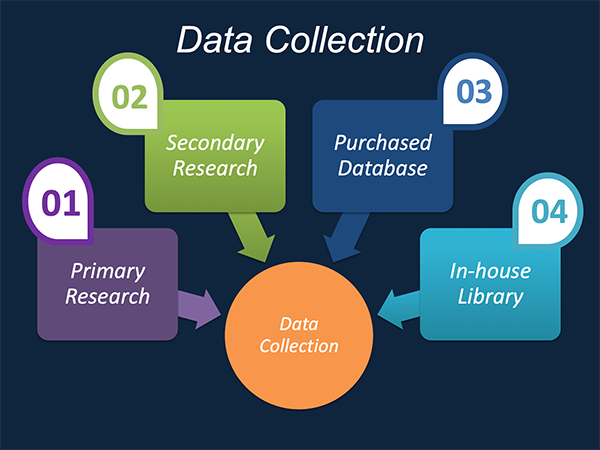
Data Synthesis: This stage includes the evaluation and assessment of all the data acquired from the primary and secondary research. It likewise includes in evaluating the information for any disparity watched while information gathering identified with the market. The data & information is gathered with consideration to the heterogeneity of sources. Scientific and statistical methods are implemented for synthesizing dissimilar information sets and provide the relevant data which is fundamental for formulating strategies. Our organization has broad involvement with information amalgamation where the information goes through different stages:


Market Formulation & Deduction: The last stage includes assigning the data & information in a suitable way in order to derive market size. Analyst reviews and domain based opinions based on holistic approach of market estimation combined with industry investigation additionally features a crucial role in this stage.
This stage includes with the finalization of the market size and numbers that we have gathered from primary and secondary research. With the data & information addition, we ensure that there is no gap in the market information. Market trend analysis is finished by our analysts by utilizing data extrapolation procedures, which give the most ideal figures to the market.
Data Validation: Validation is the most crucial step in the process. Validation & re-validation through scientifically designed technique and process that helps us finalize data-points to be used for final calculations. This stage also involves with the data triangulation process. Data triangulation generally implicates the cross validation and matching the data which has been collected from primary and secondary research methods.





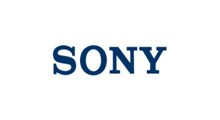

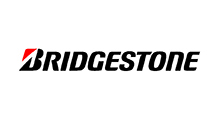

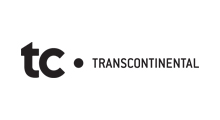















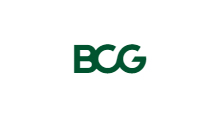


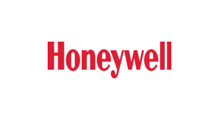

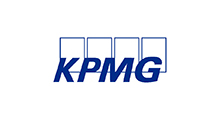
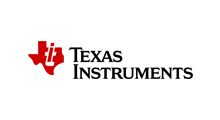



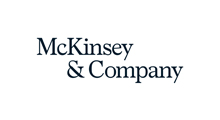

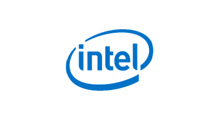







Free Customization
Countries can be added on demand
Free yearly update on purchase of Multi/Corporate User License
Companies served till date

We serve our customers 24x7 for 365 days through calls, emails and live chat options.
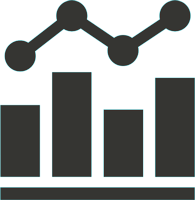
Huge database of exceptional market reports bringing market intelligence to your fingertips.

SSL enabled, we offer you various secured payment options for risk free purchase.